Abstract
Three pigeons were trained on a matching procedure involving a sample component and a choice component. Responding in the sample component, according to either a differential-reinforcement-of-low-rate schedule on some trials or a differential-reinforcement-of-other-behavior schedule on other trials, produced access to the choice component in which each of two keys was illuminated with a unique color. The correct choice response was defined by the contingency that was met to produce the choice. The food hopper operated for 1.5 seconds following an appropriate sample response and for 3 seconds following a correct choice response. A signal-detection analysis showed that variations in the probability of presentation of the different contingencies systematically affected response bias but not sensitivity to the contingencies as stimuli. Substitution of a blackout for food at the end of the sample component did not differentially affect performance, but elimination of the delay between sample and choice components generally increased the sensitivity measure. The findings suggest a role for reinforcement contingency discrimination in schedule-controlled responding.
Full text
PDF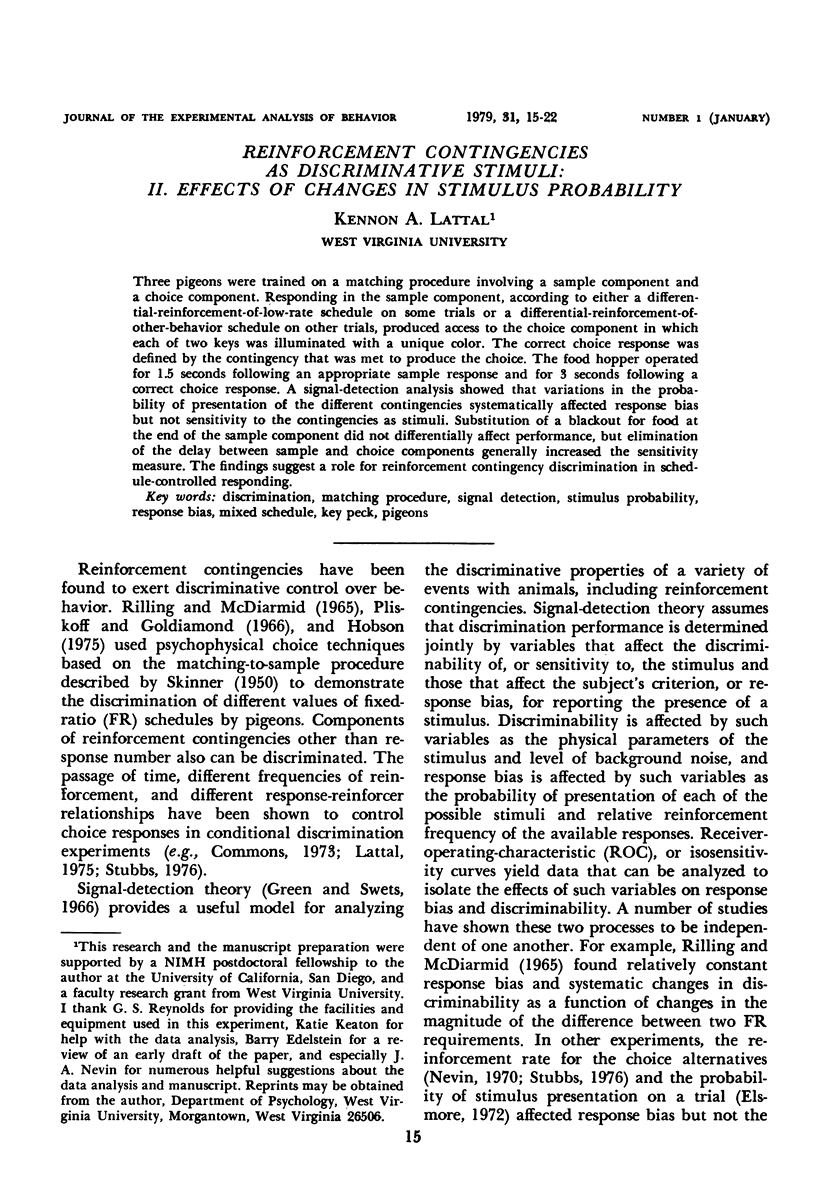

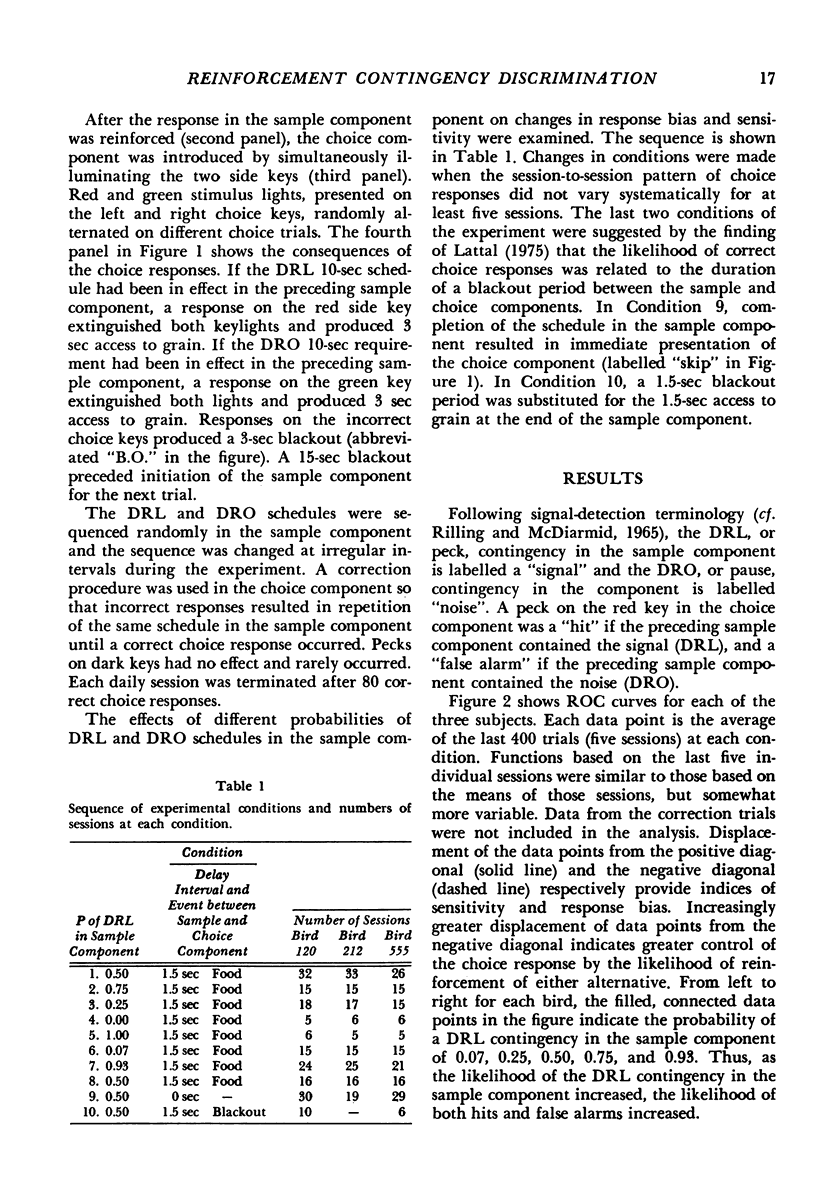
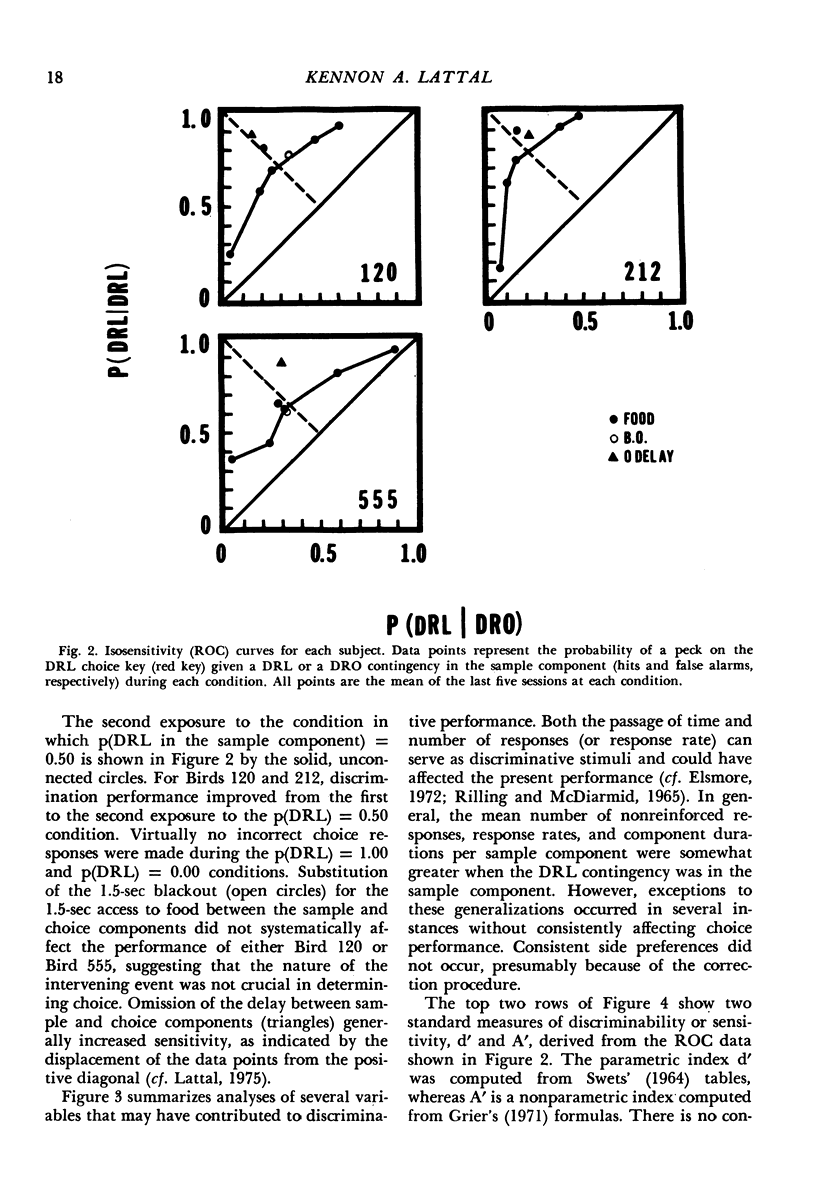
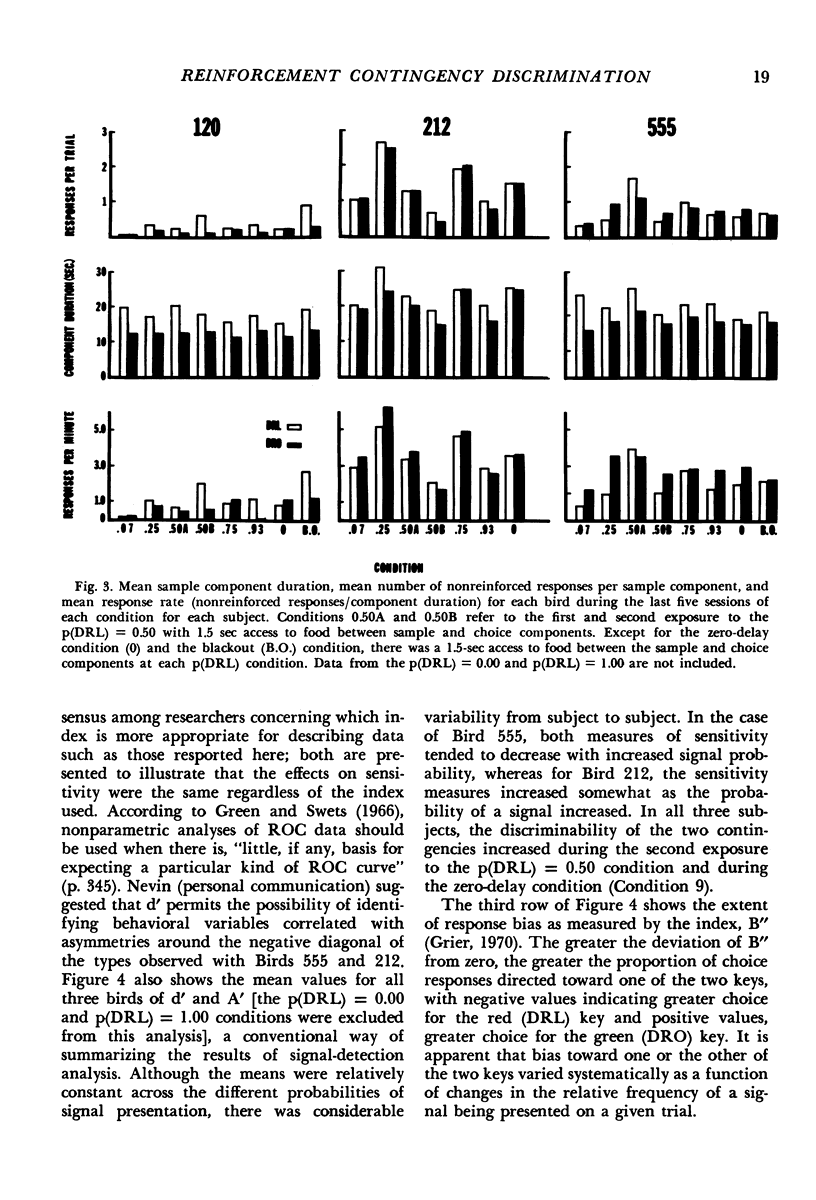
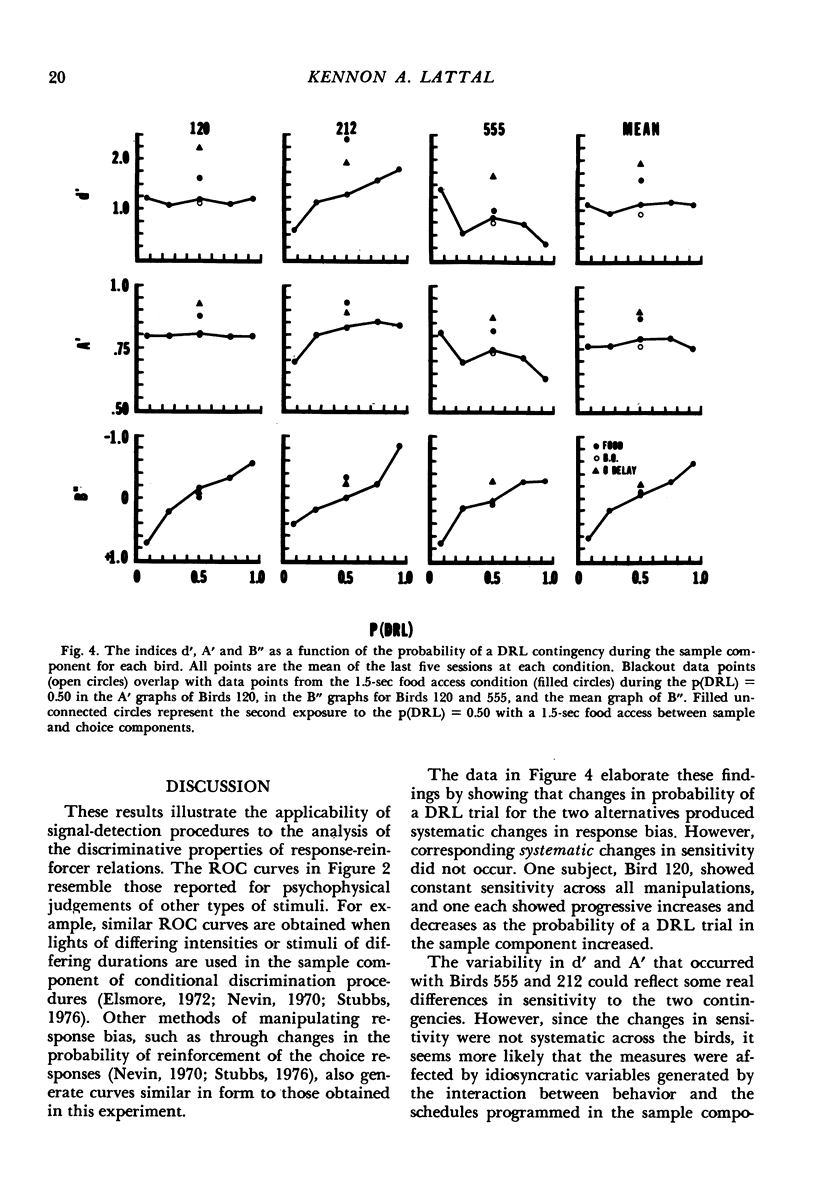
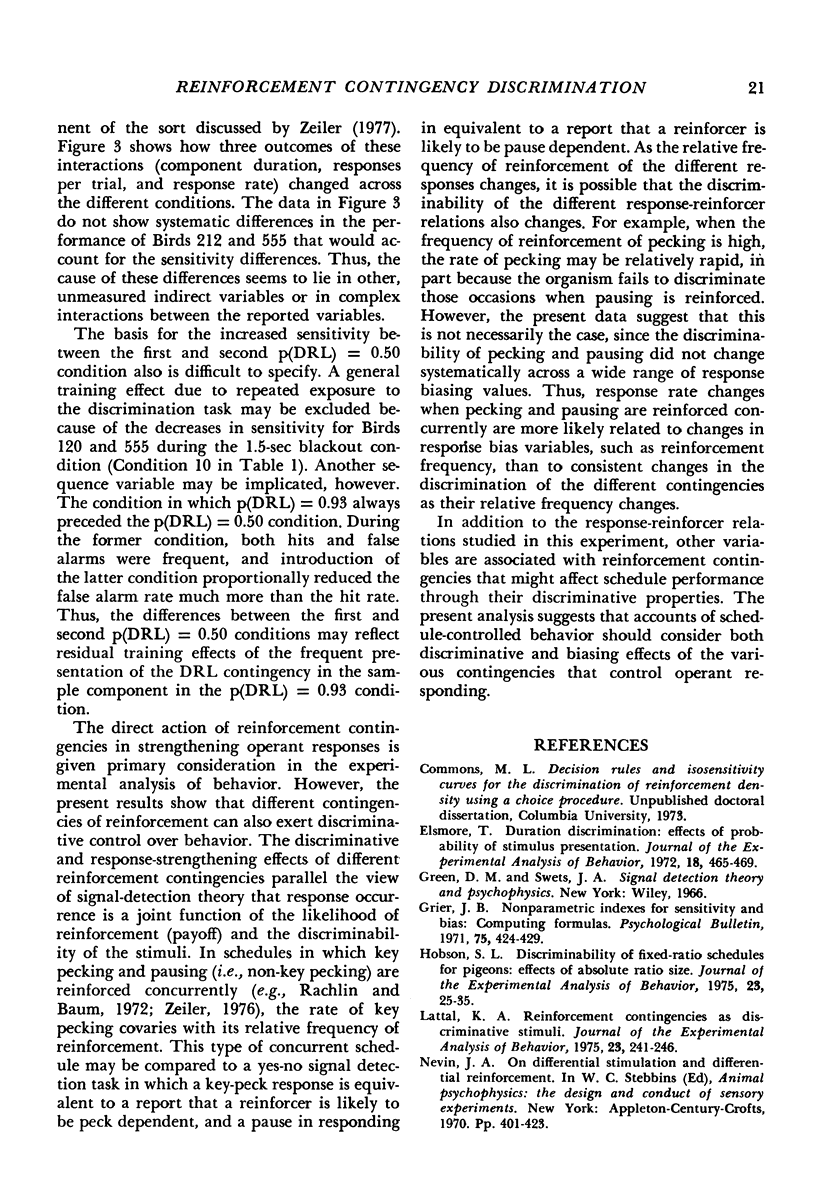
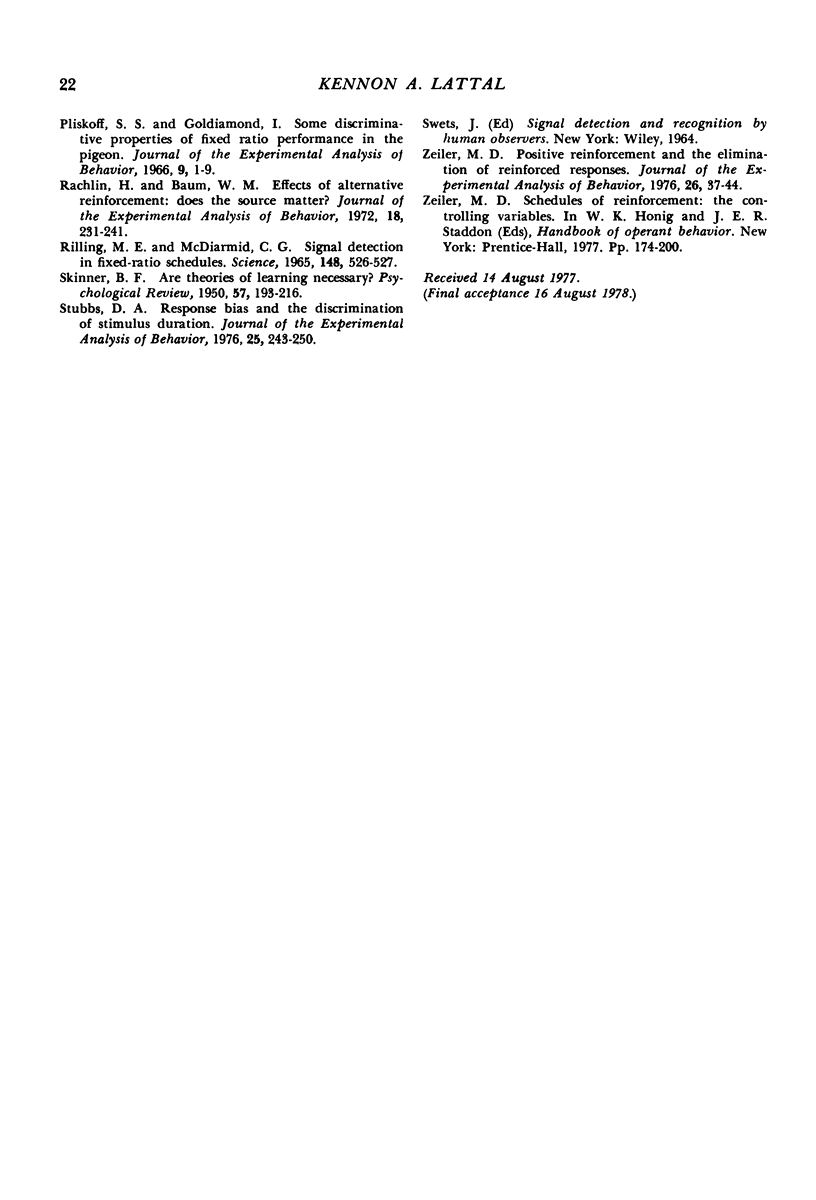
Selected References
These references are in PubMed. This may not be the complete list of references from this article.
- Elsmore T. F. Duration discrimination: effects of probability of stimulus presentation. J Exp Anal Behav. 1972 Nov;18(3):465–469. doi: 10.1901/jeab.1972.18-465. [DOI] [PMC free article] [PubMed] [Google Scholar]
- Grier J. B. Nonparametric indexes for sensitivity and bias: computing formulas. Psychol Bull. 1971 Jun;75(6):424–429. doi: 10.1037/h0031246. [DOI] [PubMed] [Google Scholar]
- Hobson S. L. Discriminability of fixed-ratio schedules for pigeons: effects of absolute ratio size. J Exp Anal Behav. 1975 Jan;23(1):25–35. doi: 10.1901/jeab.1975.23-25. [DOI] [PMC free article] [PubMed] [Google Scholar]
- Lattal K. A. Reinforcement contingencies as discriminative stimuli. J Exp Anal Behav. 1975 Mar;23(2):241–246. doi: 10.1901/jeab.1975.23-241. [DOI] [PMC free article] [PubMed] [Google Scholar]
- Pliskoff S. S., Goldiamond I. Some discriminative properties of fixed ratio performance in the pigeon. J Exp Anal Behav. 1966 Jan;9(1):1–9. doi: 10.1901/jeab.1966.9-1. [DOI] [PMC free article] [PubMed] [Google Scholar]
- RILLING M., MCDIARMID C. SIGNAL DETECTION IN FIXED-RATIO SCHEDULES. Science. 1965 Apr 23;148(3669):526–527. doi: 10.1126/science.148.3669.526. [DOI] [PubMed] [Google Scholar]
- Rachlin H., Baum W. M. Effects of alternative reinforcement: does the source matter? J Exp Anal Behav. 1972 Sep;18(2):231–241. doi: 10.1901/jeab.1972.18-231. [DOI] [PMC free article] [PubMed] [Google Scholar]
- SKINNER B. F. Are theories of learning necessary? Psychol Rev. 1950 Jul;57(4):193–216. doi: 10.1037/h0054367. [DOI] [PubMed] [Google Scholar]
- Stubbs D. A. Response bias and the discrimination of stimulus duration. J Exp Anal Behav. 1976 Mar;25(2):243–250. doi: 10.1901/jeab.1976.25-243. [DOI] [PMC free article] [PubMed] [Google Scholar]
- Zeiler M. D. Positive reinforcement and the elimination of reinforced responses. J Exp Anal Behav. 1976 Jul;26(1):37–44. doi: 10.1901/jeab.1976.26-37. [DOI] [PMC free article] [PubMed] [Google Scholar]


